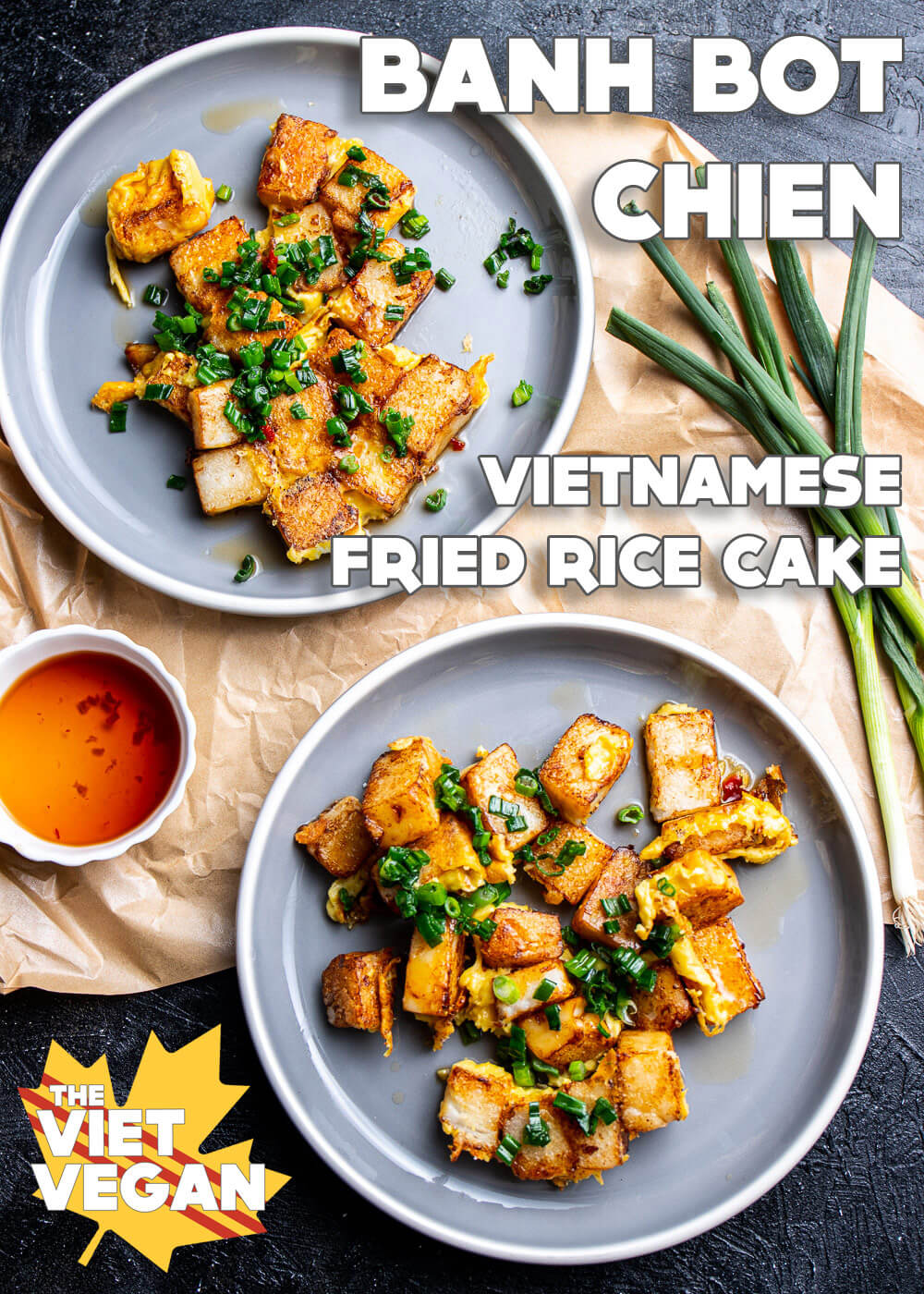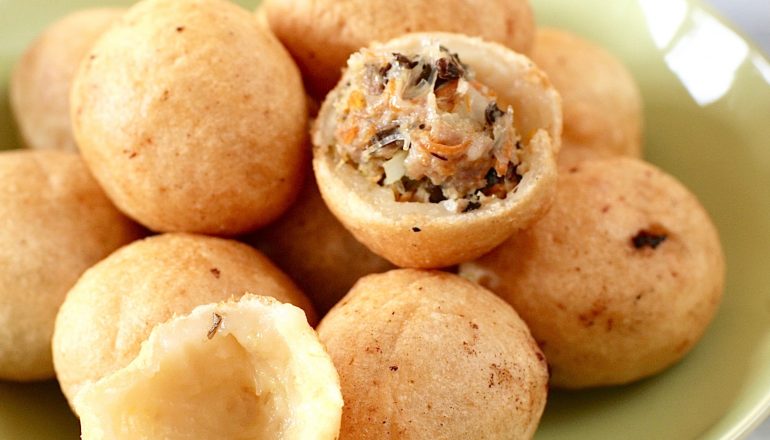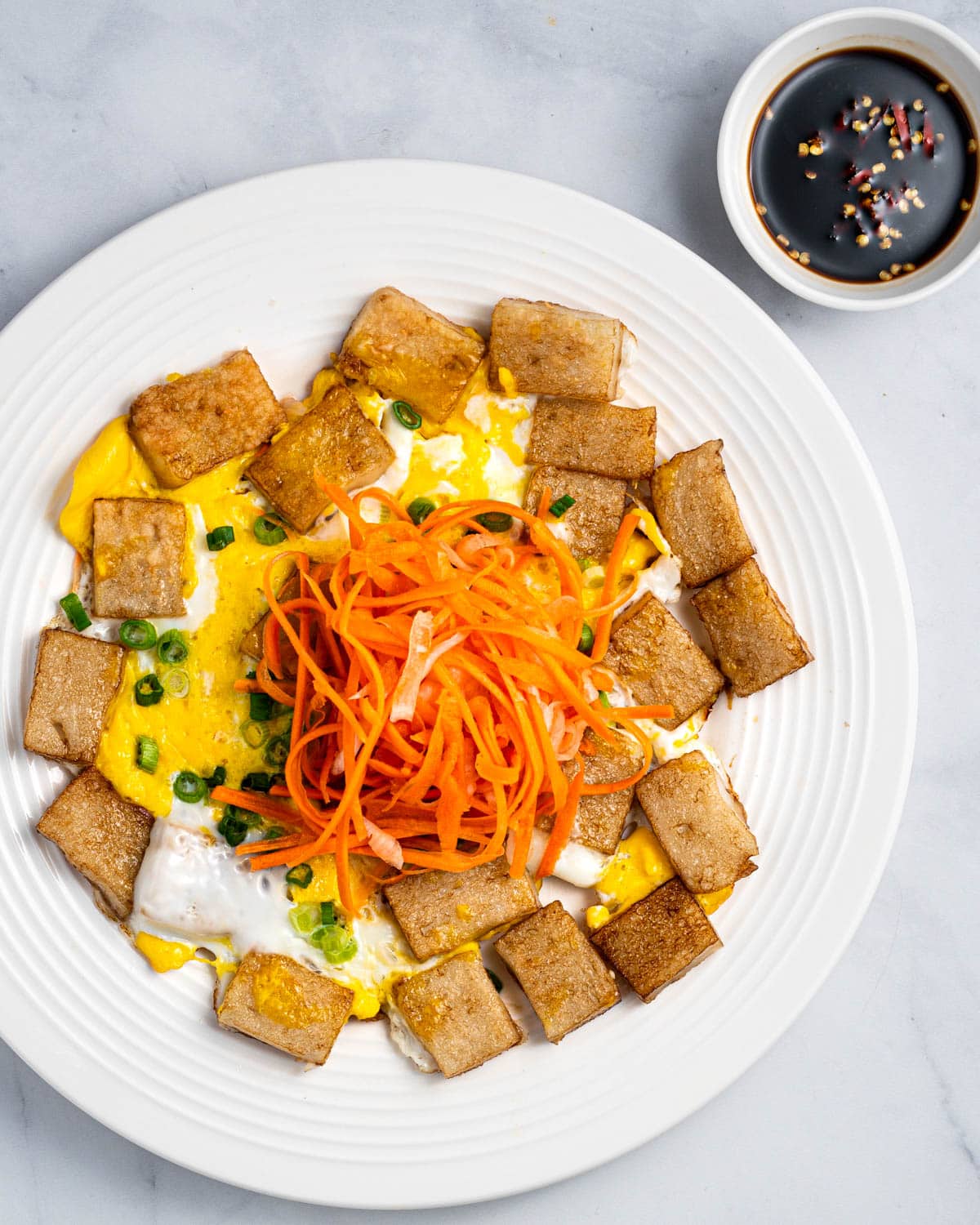Rice flour is a versatile ingredient in Vietnamese cuisine. It creates delicious, unique dishes.
Vietnamese recipes using rice flour are easy and tasty. From savory to sweet, there’s something for everyone. Vietnamese cuisine is known for its rich flavors and fresh ingredients. Rice flour plays a vital role in many traditional dishes. From crispy pancakes to soft, chewy cakes, it offers a delightful texture.
These recipes are not only delicious but also simple to prepare. Whether you’re a seasoned cook or a beginner, you’ll find rice flour recipes easy to follow. They bring a taste of Vietnam right to your kitchen. Let’s explore some popular rice flour Vietnamese recipes that will surely impress your family and friends.

Credit: thevietvegan.com
Introduction To Rice Flour In Vietnamese Cuisine
Rice flour is a key ingredient in Vietnamese cooking. It is made from finely milled rice and used in many traditional recipes. This versatile flour brings a unique texture and flavor to dishes. Vietnamese cuisine uses rice flour to create both sweet and savory meals. Let’s explore its significance and common uses in Vietnamese cooking.
Culinary Significance
Rice flour holds a special place in Vietnamese kitchens. It is gluten-free, making it a staple for those with gluten sensitivity. The flour is light and fine, giving dishes a soft and smooth texture. Rice flour is also economical, making it accessible for all households. Its neutral flavor allows it to blend well with various ingredients. From street food to festive dishes, rice flour is essential.
| Benefit | Description |
|---|---|
| Gluten-Free | Suitable for people with gluten allergies. |
| Economical | Affordable and widely available. |
| Neutral Flavor | Blends easily with other ingredients. |
| Light Texture | Gives dishes a soft and smooth feel. |
Common Uses
Rice flour is used in a variety of Vietnamese recipes. Here are some common uses:
- Bánh Xèo: A crispy pancake filled with shrimp, pork, and bean sprouts.
- Bánh Cuốn: Steamed rice rolls filled with minced pork and mushrooms.
- Bánh Khọt: Small savory rice cakes topped with shrimp and herbs.
- Chè: Sweet dessert soups made with rice flour and coconut milk.
- Bánh Xèo: Mix rice flour with water and turmeric. Pour on a hot pan. Add fillings and cook until crispy.
- Bánh Cuốn: Steam rice flour batter. Fill with cooked pork and mushrooms. Serve with dipping sauce.
- Bánh Khọt: Pour rice flour batter into small molds. Add shrimp and cook until golden.
- Chè: Combine rice flour with coconut milk and sugar. Cook until thickened. Serve warm or cold.
Rice flour is a versatile and essential ingredient in Vietnamese cuisine. It enhances the texture and flavor of many dishes. Whether for savory pancakes or sweet desserts, rice flour is a must-have in your kitchen.
Bánh Xèo: Vietnamese Sizzling Pancakes
Bánh Xèo, or Vietnamese Sizzling Pancakes, offers a delightful crunch. These savory pancakes boast a vibrant yellow hue, thanks to turmeric. The crispy exterior encases a flavorful filling of shrimp, pork, and bean sprouts. Perfect for a light meal or a tasty snack, Bánh Xèo is a favorite in Vietnamese cuisine.
Ingredients Needed
- 1 cup rice flour
- 1 cup coconut milk
- 1 cup water
- 1/2 teaspoon turmeric powder
- 1/2 teaspoon salt
- 200 grams shrimp, peeled and deveined
- 200 grams pork belly, thinly sliced
- 1 cup bean sprouts
- 1 small onion, thinly sliced
- 2 cloves garlic, minced
- Fresh herbs (mint, basil, cilantro)
- Lettuce leaves for wrapping
- Fish sauce for dipping
Cooking Method
Mix rice flour, coconut milk, water, turmeric, and salt. Stir until smooth. Let the batter rest for 30 minutes.
Heat oil in a skillet over medium heat. Sauté garlic until fragrant. Add shrimp and pork, then cook until both are done.
Pour a ladle of batter into the skillet, tilting to spread thinly. Add shrimp, pork, bean sprouts, and onions on one side.
Cover and cook until the pancake’s edges lift from the skillet. Fold the pancake in half to encase the filling. Cook until crispy and golden.
Serve Bánh Xèo with fresh herbs and lettuce. Dip in fish sauce for extra flavor.
Bánh Cuốn: Steamed Rice Rolls
Rice flour finds its way into many Vietnamese recipes. One standout dish is Bánh Cuốn, or steamed rice rolls. These delicate rolls are a beloved breakfast or snack option. They offer a unique texture and a burst of flavors.
Traditional Fillings
The traditional filling for Bánh Cuốn includes minced pork. This is often mixed with wood ear mushrooms and shallots. The combination creates a savory and slightly crunchy filling. Some variations include shrimp or tofu for a different taste.
Seasoning is simple yet effective. Fish sauce, pepper, and a bit of sugar enhance the natural flavors. Fresh herbs like cilantro or mint often complement the filling. These ingredients create a balance of savory and fresh notes.
Serving Suggestions
Bánh Cuốn is usually served with a side of nước chấm. This is a dipping sauce made from fish sauce, lime juice, sugar, and chili. The sauce adds a tangy and spicy kick. It elevates the flavors of the steamed rolls.
Fried shallots are often sprinkled on top. They provide a nice contrast to the soft rolls. Fresh herbs and cucumber slices add a refreshing touch. Bean sprouts can be served on the side for extra crunch.
Some people like to add Vietnamese sausage, known as chả lụa. This makes the dish heartier. You can also serve Bánh Cuốn with a small bowl of broth. The broth can be sipped between bites for a comforting experience.

Credit: www.ricenflour.com
Bánh Khọt: Mini Rice Flour Pancakes
Bánh Khọt, also known as mini rice flour pancakes, is a beloved Vietnamese street food. These bite-sized delights are crispy on the outside and soft inside. They are perfect for any occasion, offering a delightful mix of textures and flavors.
Preparation Steps
Making Bánh Khọt involves a few simple steps. Here’s how:
- Prepare the batter: Mix rice flour, coconut milk, and water. Add a pinch of turmeric powder for color.
- Heat the pan: Use a special Bánh Khọt pan or a regular non-stick pan with small molds.
- Cook the pancakes: Pour the batter into the molds. Add shrimp or minced pork on top. Cover and cook until the edges are crispy.
- Remove and serve: Carefully remove the pancakes from the pan. Place them on a serving plate.
Toppings And Dips
The right toppings and dips enhance the flavor of Bánh Khọt. Here are some popular options:
- Fresh herbs: Mint, cilantro, and basil add freshness.
- Pickled vegetables: Carrot and daikon radish provide a tangy crunch.
- Nuoc Cham: This Vietnamese dipping sauce combines fish sauce, lime juice, sugar, and chili. It’s essential for Bánh Khọt.
- Crushed peanuts: Sprinkle these on top for extra texture.
Bánh Bèo: Water Fern Cakes
Bánh Bèo, or Water Fern Cakes, are delightful Vietnamese street food. These small, savory rice cakes are a favorite in Central Vietnam. The cakes are soft and delicate, topped with shrimp, scallions, and crunchy toppings. They are served with a side of fish sauce for dipping. Their unique texture and flavor make them a beloved treat.
Making The Batter
To start, gather rice flour, tapioca starch, and water. Mix these ingredients in a large bowl. Stir until the mixture is smooth and free of lumps. Let the batter rest for about 30 minutes. This helps the flour absorb the water.
During this time, prepare the shrimp topping. Cook and finely chop the shrimp. Mix with finely chopped green onions. Add a pinch of salt and pepper. Set the topping aside for later.
Steaming Process
Prepare a steamer with enough water for 20 minutes of steaming. Grease small, shallow dishes with oil. Pour the batter into each dish, filling about halfway. Place the dishes in the steamer. Cover and steam for about 7-10 minutes.
Check the cakes for doneness. They should be firm but soft. Remove the dishes from the steamer. Let them cool slightly before topping with the shrimp mixture.
Serve the Bánh Bèo with a side of fish sauce for dipping. Enjoy the balance of flavors and textures in each bite.
Bánh Canh: Thick Noodle Soup
Bánh Canh: Thick Noodle Soup is a beloved Vietnamese dish. This comforting soup features thick, chewy noodles made from rice flour. The dish is famous for its rich, flavorful broth and hearty ingredients. It’s perfect for a filling meal any time of the day.
Homemade Noodles
Making Bánh Canh noodles at home is simple and satisfying. Here’s a step-by-step guide:
- Mix rice flour and tapioca starch in a bowl.
- Gradually add water while stirring until a dough forms.
- Knead the dough until smooth and elastic.
- Roll out the dough on a floured surface.
- Cut the dough into thick strips, around 1/4 inch wide.
Boil the noodles until they float, then rinse under cold water. Your homemade noodles are ready!
Flavorful Broth
The broth is the heart of Bánh Canh. A rich, savory broth enhances the dish’s taste. Follow these steps to prepare the broth:
- Start with a base of chicken or pork bones.
- Simmer the bones in water for a few hours.
- Add shallots, garlic, and ginger for depth of flavor.
- Season with fish sauce, salt, and pepper.
- Strain the broth to remove any solids.
This broth pairs perfectly with the thick noodles. Add toppings like shrimp, pork, or quail eggs for extra flavor.
Enjoy your homemade Bánh Canh with fresh herbs and lime wedges.
Tips For Perfect Rice Flour Dishes
Creating the perfect rice flour dishes can be a delightful experience. This ingredient is versatile and essential for many Vietnamese recipes. To ensure your dishes turn out great, follow these tips. You’ll learn to choose quality rice flour and avoid common mistakes.
Choosing Quality Rice Flour
Not all rice flour is the same. Look for fine, white rice flour. It should feel smooth when rubbed between your fingers. Avoid rice flour with a gritty texture. It can affect the final dish’s consistency. Check the packaging for added ingredients. Pure rice flour works best for Vietnamese recipes. Buy small quantities to keep it fresh. Store it in an airtight container in a cool, dry place.
Common Mistakes To Avoid
Many people make mistakes that can ruin their dishes. Using old rice flour is one. It loses its freshness and can change the texture. Measure your ingredients correctly. Too much or too little rice flour can alter the dish. Don’t rush the cooking process. Some recipes need time for the batter to rest. This improves the texture and flavor. Avoid using too much water when mixing. The batter should be thick and smooth, not runny. Finally, ensure your pan or steamer is hot enough. This helps achieve the right consistency and cook evenly.
Pairing Rice Flour Dishes With Drinks
Rice flour is a key ingredient in many traditional Vietnamese dishes. These dishes are often enjoyed with specific drinks that enhance their flavors. Pairing rice flour dishes with the right drinks can elevate your dining experience.
Traditional Vietnamese Beverages
Vietnamese cuisine offers a variety of traditional beverages that pair well with rice flour dishes. These drinks are not only delicious but also deeply rooted in Vietnamese culture.
- Tra Da (Iced Tea): A refreshing drink that balances the richness of rice flour dishes.
- Nuoc Mia (Sugarcane Juice): Sweet and cool, it complements savory rice flour treats.
- Che (Sweet Dessert Soup): Often served after meals, it pairs well with sweet rice flour desserts.
Modern Drink Pairings
While traditional beverages are wonderful, modern drink pairings can add a new twist to your meal. These pairings bring a fresh perspective to classic Vietnamese dishes.
| Drink | Recommended Dish |
|---|---|
| Fruit Smoothies | Banh Xeo (Savoury Pancake) |
| Craft Beer | Banh Cuon (Steamed Rice Rolls) |
| Green Tea Latte | Banh Khot (Mini Savoury Pancake) |
Experimenting with drink pairings can make your meals more enjoyable. Whether you prefer traditional or modern beverages, there’s something for everyone.

Credit: beyondsweetandsavory.com
Frequently Asked Questions
What Is Rice Flour Used For In Vietnamese Recipes?
Rice flour is a staple in Vietnamese cuisine. It’s used to make bánh xèo, bánh cuốn, and bánh khọt. These dishes are popular for their unique textures and flavors.
How Do You Make Bánh Xèo?
To make bánh xèo, mix rice flour, turmeric, and water. Pour the batter into a hot pan and add fillings like shrimp and bean sprouts. Cook until crispy.
Can I Substitute Rice Flour In Vietnamese Recipes?
Yes, you can substitute rice flour with tapioca flour or cornstarch. However, the texture and flavor may slightly differ.
What Are Gluten-free Vietnamese Dishes?
Many Vietnamese dishes are naturally gluten-free. Examples include phở, gỏi cuốn (spring rolls), and bánh xèo. These dishes use rice flour or rice noodles.
Conclusion
Rice flour brings unique flavors to Vietnamese dishes. Its versatility impresses home cooks. Try these recipes at your next meal. Delight your family with new tastes. Rice flour adds a special touch. These recipes are easy to make. Enjoy authentic Vietnamese cuisine at home.
Share these dishes with friends. They will appreciate the effort. Experiment with rice flour and discover its many uses. Cooking can be fun and rewarding. Happy cooking!
